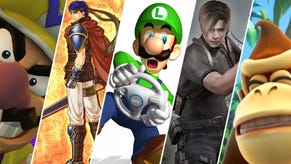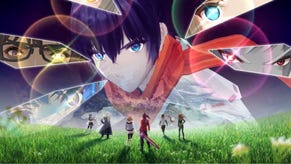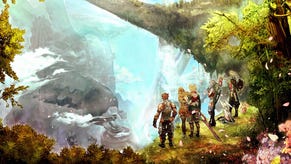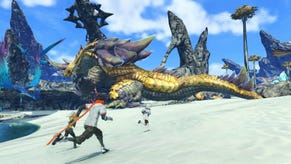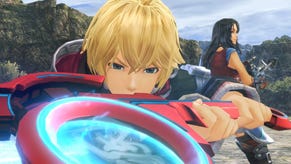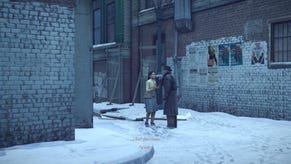Xenoblade Chronicles Definitive Edition review: a strong new version of a modern classic
Xenoblade Chronicles: Definitive Edition lives up to its name, providing the absolute best version of this modern Japanese RPG classic to date.
Some HD remasters and remakes are easier than others. One of the largest determining factors of such releases is pretty simple: how good was the original game? For Xenoblade, Nintendo and Monolith Soft's huge Wii RPG, the answer is favorable indeed. While thinking of the Wii probably first conjures up images of sports and fitness games, mini-game collections and Wii Remotes flung to shatter the screen of a brand new TV, Xenoblade is arguably one of the console's most important and stand-out games.
In fact, of everything Nintendo introduced in that era it is one of the most relevant today. Where other successes have faded, Xenoblade has a Smash character, two sequels including an excellent Switch entry, a 3DS port, and a feverish fan demand for another entry. The original game is that good.
For the uninitiated, from a distance Xenoblade might look like any other Japanese RPG, with colorful characters and a heartfelt if emotionally overwrought storyline. But there's much here that makes it special, from the heart-to-heart scenes that give individual character relationships a greater chance to shine to the world itself, a land where people live on the back of the toes of giant sentient beings. One creature, Bionis, once did battle with other gigantic foes, but now smaller beings clash swords within the crevices and scars of a millennia-old battle. As the story wears on, the truth of the battles you fight and the world you're fighting for is unraveled.
Unlike many of its genre peers, Xenoblade really shines in how it's played. Its world is open-ended, with each area feeling more of an impressive sprawl than the last. Even when areas are smaller, often impressive skyboxes and landscapes beyond make them feel more than they are. The first area of the game is a perfect example of the open-ended nature of Xenoblade Chronicles. In those first few hours players can happily just follow the icons on the map to quickly progress the main story, but it's also easy to wander off into the world, tackling side quests, picking up items and simply exploring. If you want to climb up high and then fling yourself from the highest perch to splash into water below, you can. Xenoblade is open.
The design of this world is key to the general flow of Xenoblade. There's a full day-night cycle as well as a weather system, and the behavior and placement of enemies and NPCs is directly impacted by these systems. Xenoblade shows you where things can go early on, offering glimpses of hugely powerful enemies you're better off avoiding for now very early in the game. Later, buffed up and impressive, you can come back and squash these enemies. Looking at all of this in 2020, ten years after the game's original release, one has to wonder if elements of Xenoblade's design later crept into The Legend of Zelda: Breath of the Wild - which is naturally a huge compliment to pay.
Once you enter into combat with the enemy, things again are a little deceptive looking. To watch a video of early-game combat, Xenoblade looks like an auto-attack bonanza, the sort of game where you can switch your brain off - but nothing could be further than the truth. Characters do indeed automatically engage with the enemy, attacking as often as they're able, but that's only the case to allow you to engage with the full depth of its systems. And boy, there is a whole lot of depth.
While it has the look of an action RPG, the DNA strands that make up Xenoblade are perhaps more closely related to tactical and turn-based RPGs, where it's all about using the right moves at the right time. While you do rack up combos through chain attacks, it's more about picking the right sequence of attacks to force an enemy error, or stack up different status effects in order to topple or stun a foe. Some compare the rhythm to that of an MMO, where characters will actively tank while others kite around the rear of the enemy to execute moves that dish out big damage. In other ways it resembles the excellent Final Fantasy 12, but with more of a focus on executing moves directly than complicated AI routines.
The flow of combat is determined, of course, by additional depth in the menus. You can have three party members at any given time, and each party member can equip a range of arts, the special skills you trigger to deal the most damage. Your party and arts composition will massively change the way combat is approached. This mesh of interlocking systems make Xenoblade one of the most satisfying RPGs of the last decade for sheer potential around mechanical experimentation and exploitation.
There's not much to drag the game down, to be honest - some dodgy voice over, a story that takes a little too long to get going... stuff that, in the grand scheme of things, is pretty inconsequential. In the end, Xenoblade is a triumph, and in this sense it's perhaps no surprise it went on to become a thriving new franchise for Nintendo.
So, that's Xenoblade: one of the best RPGs of its time, and a shining beacon in the Japanese RPG world released at a time when that particular sub-genre was struggling. It holds up well - so what of the remaster?
The original Xenoblade is excellent, then, but Definitive Edition wouldn't be worth much if it wasn't a solid version of the game. The good news: it is. Across the internet some fans have been arguing about if this is technically a remake or a remaster, as under the hood it's apparently more like an all-new version of the game. To be honest, the quality that is displayed here is so faithful and close to an idealized version of the original that I think it's fairer to call it a remaster. I dunno; argue about it in the comments.
Regardless of what you want to call it, this is up there as one of the higher quality and more smartly-built remasters around. Character models have been replaced entirely with new ones that have an art style that brings this game in line with the more strictly anime aesthetic of the sequel, and the visuals have been generally cleaned up. This is uneven in places - sometimes you'll see a strangely out-of-place blurry texture next to a super-sharp new one, but these issues are rare.
Performance is going to be a sticking point for some, especially around the resolution, which is adaptive. It can vary wildly, and when things get particularly busy it can limbo surprisingly low - but honestly, I haven't found the performance to be inadequate at all. This is a better-looking and better-performing version of the game than either of the previous versions. It's true that Monolith Soft probably could've squeezed even better performance out of this version of the game had they not done so many smaller upgrades to its visuals.
Xenoblade Definitive Edition looks good docked, but because of the adaptive resolution and the sheer size of the game, I enjoyed it far more in handheld mode. The size of the screen hides the graphical imperfections brilliantly, and Xenoblade's open-ended structure feels perfect for handheld play. You can drop in, explore and suspend the game at a moment's notice, then pick up the story when you know you've got more time. In this sense, the game is perfect for Switch.
Beyond the handling of the bread and butter of a Switch port, Definitive Edition offers a number of smaller quality of life additions that all add up to make the game a more comfortable experience. It is, by every measure, a definitive edition.
That isn't even all of it, though. There's also an all-new chapter, Future Connected, a new story set a year after the events of the main game. You can play this right off the bat through the menu, or play it after seeing the main story again. It's well over ten hours of new content, tying up loose ends from the original story while teasing out new details. The new story is an enjoyable experience, but without getting into spoilers it's almost pointless to talk about here: it is simply more Xenoblade, delivered with a confidence and a finesse that suggests Monolith know just how good the base game is.
When a classic is remastered, there is really only one mission: don't mess it up. Monolith and Nintendo have admirably improved upon a Wii classic, delivering the one version of this game that people should now aim to play. It's true that some of the original game design frustrations remain untouched and performance is solid but sadly not perfect. These things barely matter, though; Xenoblade Chronicles Definitive Edition is easily a must-own for any RPG fan with a Switch.





